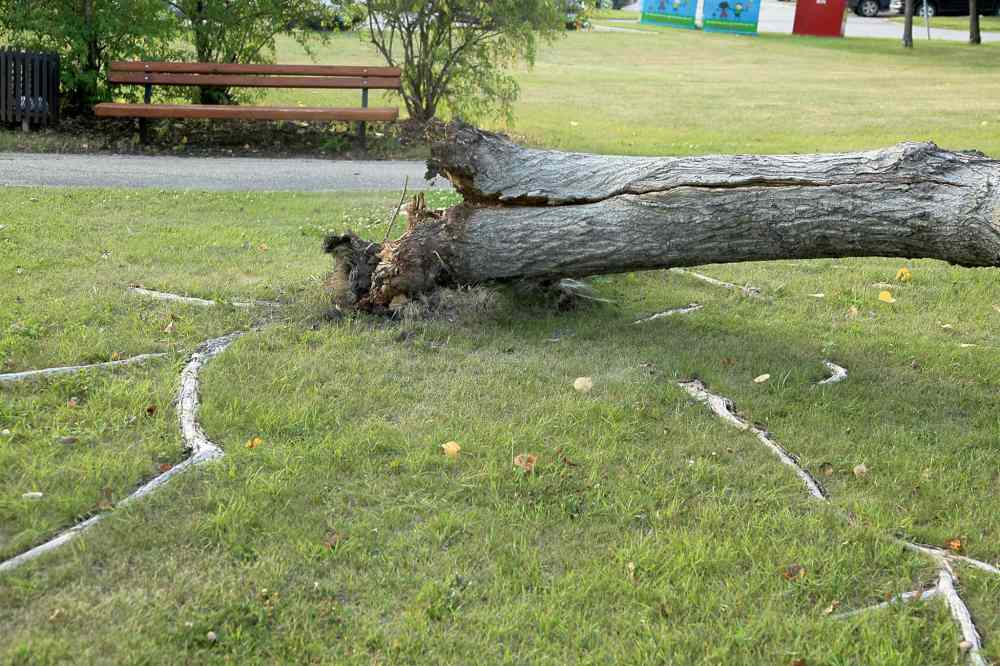Damaged surface roots caused by lawn mowers
Advertisement
Read this article for free:
or
Already have an account? Log in here »
To continue reading, please subscribe:
Monthly Digital Subscription
$1 per week for 24 weeks*
- Enjoy unlimited reading on winnipegfreepress.com
- Read the E-Edition, our digital replica newspaper
- Access News Break, our award-winning app
- Play interactive puzzles
*Billed as $4.00 plus GST every four weeks. After 24 weeks, price increases to the regular rate of $19.00 plus GST every four weeks. Offer available to new and qualified returning subscribers only. Cancel any time.
Monthly Digital Subscription
$4.75/week*
- Enjoy unlimited reading on winnipegfreepress.com
- Read the E-Edition, our digital replica newspaper
- Access News Break, our award-winning app
- Play interactive puzzles
*Billed as $19 plus GST every four weeks. Cancel any time.
To continue reading, please subscribe:
Add Winnipeg Free Press access to your Brandon Sun subscription for only
$1 for the first 4 weeks*
*$1 will be added to your next bill. After your 4 weeks access is complete your rate will increase by $0.00 a X percent off the regular rate.
Read unlimited articles for free today:
or
Already have an account? Log in here »
Hey there, time traveller!
This article was published 15/08/2015 (3703 days ago), so information in it may no longer be current.
What can a homeowner do? I have visited thousands of properties over the years as a consulting urban forester, arborist and tree diagnostician. The most common issue encountered with my clients is the presence of tree roots that are located on the surface of lawns and in plant beds. Each week I discuss the surface roots issue with one or more property owners. Roots do not move to the surface of the yard, they stay put. The soil — typically clay loam — around them is shrinking as more water is being used by the trees than is replaced by rainfall and/or supplemental watering.
The grass still needs to be cut, so as a consequence the surface roots will be damaged by the mowing equipment. Lawn mower blades damage roots during the growing season, year after year. The conducting cells in those roots are repeatedly damaged to the extent those roots no longer function or do so very poorly. They die off. I should mention the surface roots are often the anchoring roots especially for large mature trees such as Colorado spruce, poplars, willows, silver maple, Manitoba maple and green ash. In clay loam soils roots do not penetrate those soils to any great depth as so many people believe. The gumbo clay prevents penetration below about a metre.
As the decay process continues in the surface roots, the tree become weakened. Decayed wood in the roots spreads to the base of the tree trunk. The anchoring function of those roots is now severely compromised. Wood-rotting fungi enters the tree and starts weakening the wood through an accelerated decay process. Internal wood decay in the trunk and branches may or may not be noticeable but it is certainly present.

The solution to the surface roots problem is to prevent lawns from experiencing long dry periods if you have large trees. Water the lawn regularly but do not over water. As soon as you see the early appearance of surface roots, think about covering the roots with top soil and reseeding. Alternatively you could re-sod the area of your lawn where surface roots occur. Re-sodding will not work for exposed roots under a large coniferous evergreen such as a spruce, fir or pine where heavy shade and surface soil acidity will prevent the healthy development of grass. Shade tolerant grasses may be helpful under large shade trees but not under the canopy of coniferous evergreens.
Following these instructions will hopefully avoid trees falling down on your roof or garden, or on your neighbour’s roof during periods of high winds. If you have what you think are problem surface roots call a Manitoba licensed arborist to examine your roots and the tree.
Michael Allen M.Sc.F., RPF (ret’d) is a consulting urban forester, tree diagnostician and certified arborist. He owns Viburnum Tree Experts. He can be reached at 204-831-6503 or 204-223-7709.

